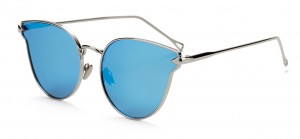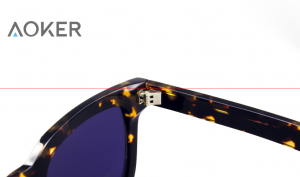A pair of sunglasses looks very simple, i.e. two pieces of color plastic or glasses lenses into plastic or metal frames.

In fact, the two pieces of lenses can cause quite many differences.
When you use sunglasses, these differences will have a great impact on you.
A pair of good sunglasses must have the following four functions:
To prevent ultraviolet radiation in sunlight
UV rays can damage the cornea and the retina; high-quality sunglasses can completely eliminate the UV radiation.
To prevent light exposure
When the eye receives too much light, it will naturally shrink the iris. Once the contraction of the iris to the limit state, then people need to squint. If the light is still too much, such as the snow reflected sunlight, will cause damages to the retina. High-quality sunglasses can filter out up to 97% of the lights into eyes to damages.

To prevent glares
Some surfaces, such as water, can reflect a lot of lights, and this will disrupt the vision or hide objects. High-quality sunglasses can use a glare polarizer technology to eliminate such glares.
Eliminate specific characteristic frequency of light
Certain frequencies of light will blur vision, while other frequencies of light can enhance the contrast.
Choosing the right color for the sunglasses, making it to get better effects in certain circumstances. If the sunglasses do not provide UV protection, it will give you more exposure to ultraviolet irradiation. Cheap sunglasses filter out a portion of the light, causing your iris to open to receive more light. This also would allow more ultraviolet radiation to enter, increased ultraviolet radiation damage to the retina.
Thus, for a variety of sunglasses, there are many differences. For a particular use of the environment, to select a pair of suitable and high-quality sunglasses will provide you with maximum protections.